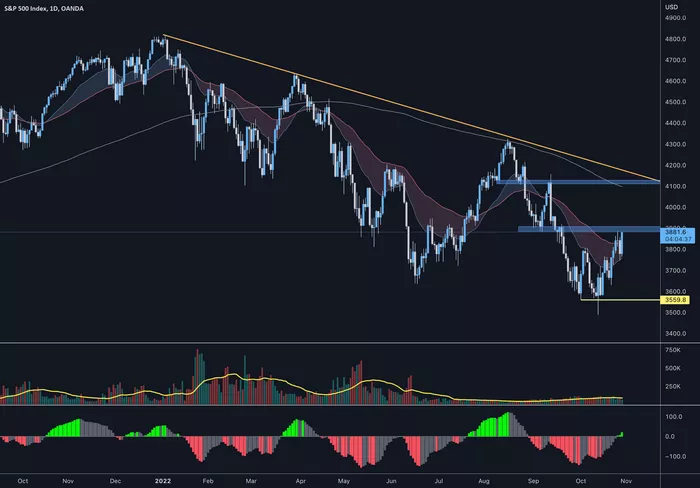In the dynamic and complex world of the stocks market, some investment terms stand out more than others. One of the most exciting among them is “multibagger stocks.” These are the dream investments of every investor—stocks that multiply in value several times over the years, yielding returns of 100%, 200%, 1000%, or even more. But what exactly are multibagger stocks, how are they identified, and what makes them such a powerful vehicle for wealth creation? This article provides an in-depth exploration into these high-reward opportunities within the stocks trading ecosystem.
What Are Multiplier Stocks?
Understanding the Definition of Multibagger Stocks
The term “multibagger” was coined by Peter Lynch in his iconic book, *One Up on Wall Street*. A multibagger stock refers to an equity investment that increases in value multiple times over the initial investment. For example, a “two-bagger” doubles your investment, a “ten-bagger” multiplies it ten times, and so on.
Multibaggers are not just high-return stocks; they are transformative financial instruments that can change the investment trajectory of individuals, funds, and institutional portfolios. They are frequently linked with emerging sectors, turnaround companies, or undervalued businesses that grow exponentially over time.
Characteristics of Multibagger Stocks
Not all stocks can become multibaggers. Certain financial and qualitative indicators often mark the companies with the potential to generate exponential returns:
Strong Earnings Growth: Continuous profit growth signals business strength and often leads to an increase in the stocks price.
Low Debt: A healthy balance sheet with low or manageable debt enhances a company’s resilience and future expansion capabilities.
Efficient Management: A visionary leadership team with a track record of success can steer the company toward consistent performance.
Competitive Advantage: Companies with strong moats (like brand, technology, network effects) tend to outperform competitors and scale faster.
Scalability: A multibagger stock usually belongs to a company that has significant room to grow—geographically, operationally, or via new products.
The Lifecycle of a Multibagger Stock
Multibagger stocks do not become legends overnight. Their growth trajectory typically follows several key stages:
Undervaluation Phase: During this phase, the company is usually overlooked or underappreciated. Valuations are low, and the stocks price may not reflect the intrinsic potential.
Discovery Phase: Gradually, investors begin to notice the company’s performance, market share, or innovation. Early momentum sets in.
Expansion Phase: Sales and profits start scaling, and the stock gains more attention from analysts and institutional investors.
Re-rating Phase: Valuation multiples rise as the market now assigns a premium to the company’s growth story.
Stabilization Phase: Growth may slow but the company remains fundamentally strong, maintaining investor confidence.
How to Identify Potential Multibagger Stocks
Identifying a multibagger stock is both an art and science. It involves a mix of fundamental analysis, industry understanding, and a forward-looking mindset. Here’s how to begin:
Look for Emerging Sectors: Sectors such as green energy, fintech, AI, and biotechnology are examples where multibaggers often emerge.
Study Financials: Analyze key ratios—ROE, debt-to-equity, profit margins, and cash flows. Sustained improvement signals potential.
Evaluate the Product or Service: Ask whether the company is solving a real problem in a scalable and profitable way.
Check Management Pedigree: A seasoned and ethical leadership team often makes all the difference.
Assess Market Cap: Small-cap and mid-cap stocks are more likely to become multibaggers than already matured large caps.
Risks Involved with Multibagger Investing
While the promise of multibaggers is alluring, it comes with risks:
Volatility: Many potential multibaggers are small-cap stocks, making them vulnerable to price swings.
Market Sentiment: Negative news or poor quarterly results can hurt performance significantly.
Liquidity Risk: Some promising stocks may have low trading volumes, making entry and exit difficult.
Management Risk: Poor governance can derail even the most promising business models.
Case Studies: Legendary Multibagger Stocks
Examining historical multibaggers provides valuable insights:
Amazon (AMZN): From a modest IPO in 1997, it has grown into a trillion-dollar behemoth with early investors enjoying exponential returns.
Infosys: An Indian tech giant that turned a few thousand rupees into crores for its early backers.
Tesla: Defied doubters to become one of the most celebrated multibaggers in the global stocks market.
Multibagger Stocks vs. Blue-Chip Stocks
Multibaggers and blue-chip stocks differ in several key ways:
Risk Profile: Blue-chip stocks are stable and consistent. Multibaggers are riskier but have higher upside potential.
Growth Stage: Blue-chips are typically mature companies; multibaggers are emerging or turnaround stories.
Returns: Blue-chips offer steady, modest returns. Multibaggers can offer exponential growth.
Investment Strategies to Capture Multibaggers
To increase your chances of discovering multibaggers, consider the following strategies:
Buy and Hold: True multibaggers take time. Patience is key.
Portfolio Diversification: Spread your risk across sectors and market caps.
Focus on Fundamentals: Don’t chase hype. Rely on strong business models and sound financials.
Follow Smart Money: Track institutional buying and insider activity for clues.
Role of Stock Price in Multibagger Stocks
Stocks price is a critical metric in evaluating multibaggers, but it shouldn’t be viewed in isolation. A low price doesn’t always mean undervalued, and a high price doesn’t imply overvalued. Context matters. Look at valuations using P/E, P/BV, EV/EBITDA, and growth expectations. Price movements can offer clues about market perception and sentiment, but a rigorous analysis of value is always more reliable.
Psychology of Investing in Multibagger Stocks
Psychology plays a crucial role in long-term investing. Emotions like greed and fear can cloud judgment. To ride a multibagger journey, investors must resist the urge to exit early, endure temporary declines, and stay focused on long-term value creation. Mental fortitude, conviction in research, and discipline are indispensable traits for multibagger investors.
Multibaggers in Global and Emerging Markets
Emerging markets such as India, Brazil, and Vietnam are fertile grounds for multibaggers due to rapid economic development and favorable demographics. However, risks like regulatory unpredictability and currency volatility are higher. Global markets offer multibaggers in innovation-driven sectors like biotechnology, AI, renewable energy, and cloud computing. Smart investors can blend both geographies for optimized returns.
Red Flags: When a Multibagger Becomes a Value Trap
Not every potential multibagger realizes its promise. Look out for these signs:
Stagnant or Declining Revenue: Indicates demand issues.
Frequent Management Changes: Reflects instability.
Unmanageable Debt: Excess leverage can derail growth.
Regulatory Issues: Especially in sectors like pharma or telecom.
Conclusion
Multibagger stocks are the holy grail of long-term investing. They offer exponential returns and life-changing wealth, but only for those who combine analytical rigor with emotional resilience. A strategic approach—grounded in research, supported by patience, and guided by discipline—is essential to uncovering these rare gems.
In today’s stocks market, the rise of technology, consumer behavior shifts, and global interconnectedness are constantly reshaping opportunities. Staying informed, focusing on fundamentals, and leveraging platforms for stocks trading and analysis can significantly increase your chances of identifying the next multibagger.
Remember: the journey to identifying and investing in a multibagger starts with understanding its DNA. And that journey begins with education—just like the one you’ve taken today.
Related topics:
































